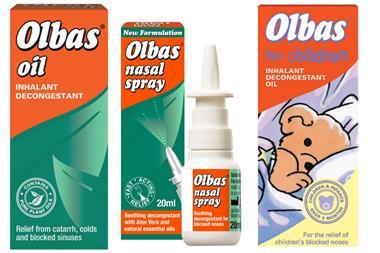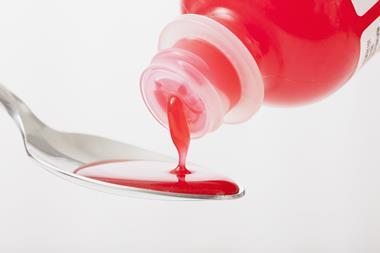Health and beauty is one of the broadest churches in the convenience store sector, taking in diverse categories from deodorants and vitamins to what Mintel charmingly calls ‘nerve tonics’. And like many other markets, it’s just starting to get its best face back on following the rigours of the recent recession.
According to research commissioned from Mintel exclusively for the National Convenience Show 2014, the market is fairly flat - with health and beauty value sales in the impulse channel down by 0.4% year on year. But despite this slightly unhealthy figure, there’s no need to reach for one of those aforementioned nerve tonics just yet.
Size matters
FMCG brands are usually trying to convince consumers that bigger is always better. So it came as a surprise to analysts last year when Unilever launched a compressed deodorant format across some of its biggest brands - Sure Women, Dove and Vaseline Intensive.
Unilever says that the new-look cans feature half the gas of the standard format plus 28% less packaging. Most importantly, this leads to a 25% smaller carbon footprint - neatly meeting the eco-credentials that shoppers say they want.
The compact formats make great news for c-store retailers, who are often stuck for space in the health and beauty aisle.
According to Sara Jones, client services director at design agency DewGibbons + Partners, the trend for smaller formats is set to continue. “Smaller formats are cheaper, so this makes it less of an outlay for the distress shopper who may already have the larger format at home,” she says.
The category is still worth a good-looking £122.9m and delivers a lucrative customer type, too - with the average health and beauty shopper spending £9.74 per basket and visiting stores about 3.6 times a week, according to HIM.
Like a good proportion of c-store managers, Raaj Chandarana from Tara’s News in High Wycombe, Buckinghamshire, says that health and beauty isn’t a key focus for his store, but it still brings customers in. “It’s a category you definitely have to stock,” he says.
“I think that it’s all part and parcel of the overall convenience store package.”
His store’s best-selling products chime perfectly with Mintel’s category top 10, with women’s sanitary protection and baby care his top two ‘must-haves’.
“Female sanitary items are a must-stock, since so many women come in for them,” he says. “Plus baby products, such as nappies, are big sellers for us - they’re definitely at the top.”
This babycentric sentiment is also echoed by Bob Young from Robin Hill stores in Marmhull, Dorset. “I think that the biggest thing we sell in health and beauty is Huggies baby wipes,” he says.
“In fact, I think we’ve sold more of them than the rest of the health and beauty range put together!”
As the list of top-selling products suggests, distress purchases are the main reasons customers come in for health and beauty items.
HIM senior research manager Blake Gladman explains that this trend isn’t surprising, seeing that supermarkets have gradually eroded the standard top-up market from independents.
“Top-up is the most valuable mission in convenience,” he says. “However, we have seen that the increased number of supermarkets and discounters on the high street are stealing the ‘planned’ top-up market from convenience.”
He adds that c-stores should therefore capitalise on the distress market with classic need-now items such as toothpaste, deodorant, shampoo, soap, shower gel, feminine hygiene and razors.
“Ultimately, shoppers know that these products are going to be more expensive in a c-store than most other places,” he says. “They will never plan to come and buy these products - so the critical thing is to have the leading brands and to ensure you have good availability on these core lines.”
One of the peculiarities of the health and beauty sector is that these ‘core lines’ can differ from customer to customer, and so store to store. And once you’ve stocked classic shampoo, a new dry shampoo and a conditioner from one best-selling brand then you’ve probably already filled up a lot of shelf space.
“My advice is not to get a planogram or buy what your suppliers tell you,” says Raaj. “Every store is very different. Ours is near a school so we’ve got lots of mums coming in - and that’s good for some aspects of health and beauty,” he says. “But if you’re near a building site things are going to be very different.”
He uses what he calls a ‘pull’ strategy that stems from stocking what customers say they need - not what others think will sell.
“I’m quite proactive,” he adds. “If I see pregnant women come in I like to ask them what they think of our baby selection. Then if they think something’s missing I make sure I’ll get it in if they say they’ll come and buy it!”
Products for baby and all
Any new parents reading this feature won’t be surprised to learn that baby care tops the c-store health and beauty category.
Nappies, and the various wipes and lotions that accompany them, are essentials for harried mums and dads.
And, if you have the right customer demographic, often the only limit to the product range you can stock is the space you have available.
“I’d like to expand our range of baby products - to do more of the milks, lotions and different sizes of nappies - but we just don’t have the space,” says Raaj Chandarana from Tara’s News in High Wycombe, Buckinghamshire.
One clever way to maximise space is to offer multi-functional products that are great for both parents and babies alike.
For instance, moistened adult wipes can work just as well for removing make-up as dealing with gruesome baby-led accidents.
Brands such as Johnson’s have spotted how certain ‘baby’ products can chime with all sorts of adult customers - even those without kids.
“Johnson’s baby products such as Johnson’s baby oil and Johnson’s baby lotion are worth almost £500,000 within the convenience channel,” says Johnson’s commercial director Andrew Freestone.
“Research has shown that almost 70% of shoppers buying Johnson’s baby talc don’t have children, while more than half of all baby oil purchases are from people without families.”
In some c-store categories customers are happy to trade down to own brand products as they wait to see what’s next for the economy. But retailer feedback suggests that in health and beauty well-known brands with big ad spends still come out on top.
“Among our customers people still want the big-name brands and products that they recognise,” asserts Bob. “So we do Gillette shaving gel, and the Dove deodorants for women - plus a full range of soaps, Head & Shoulders shampoo and the Carex pumps.”
Bob says that he did once experiment with what he calls a “low-cost lemon shampoo with a £1 price point” - but that customers just ignored it. “So for us the main brands are the way to go,” he says.
However, this brand loyalty - and a growing pressure from customers to offer better value - can mean that health and beauty is a difficult category to get right.
“It’s a tough category - and it’s not managed very well at the top through the supply chain,” says Nisa retailer Rav Garcha.
“There are too many offers and too much churn. For instance, we’ll have an offer on Pantene one month - and it’s great. But then the next month the offer will have moved on to something else. There’s no consistency.
“People are brand loyal, and if they’re looking for shampoo, but don’t want Pantene, then they won’t buy it.”
Rav believes that the days when “people thought being a convenience store meant we could charge anything” are over - and that high price points and a lack of stock consistency is holding independents back.
“For independents, our price points just aren’t in line with popular mainstream locations such as the big supermarkets or Boots,” he says. “For instance, when you look at price points on a category such as sanitary protection they’re just not realistic compared with the supermarkets.”
This makes for a difficult balancing act as stores try to get the right range, while offering appealing prices.
Yet, if it’s so difficult to manage, why bother with health and beauty in the first place?
The answer lies with those distress customers who need a shampoo, sanitary pads, or a new nappy for their one-year-old - right now.
“Once you start down that road it would be like dropping Pepsi because it doesn’t sell quite as well as Coke,” laughs Rav.
“There are a million ways to lose money in convenience retailing. And getting rid of health and beauty would be one of the best ways to start doing so.”
In Brief
Dental giant
GlaxoSmithKline is trying to get retailers smiling all through summer with a new £3.2m ad push for its Complete Protection range. The brand will be attempting to further boost its market-leading position. It holds a 45% market share, according to Kantar Worldpanel.
Good things, small packages
After applying its innovative ‘compressed technology’ to its women’s range last year, this time Unilever’s men’s packages (including Lynx and Sure) are being shrunk to save energy and the environment. Who says size doesn’t matter?
Hair colour made easy
For more mature customers about to head off on holiday, or away on business, home colour can be a must. With this in mind Nice ’n Easy has introduced a new AgeDefy collection designed to restore the look of younger hair.
Right Guard goes high-tech
Right Guard has relaunched its Xtreme range for men and women with advanced sweat detect technology. The science behind the product claims to recognise and anticipate sweat before it starts, using odour-neutralising capsules to absorb unwanted odours and release fresh scent. Variants target specific needs such as stain prevention and stress sweat.
Return of the Mach
Recent press reports that UK men have now reached ‘peak beard’ and will soon be returning to the whisker-free look couldn’t have come at a better time for Gillette.
The brand has just made-over the iconic Mach3 for the first time in a decade with a newly designed razor and refreshed on-pack artwork all backed by a multi-channel marketing campaign.
“Razors and blades are worth £9.5m to the convenience sector and shave prep products £4m,” says P&G Gillette brand manager Jared Regan. “This means there is a clear window of opportunity for those wholesalers who offer a well-stocked male grooming fixture.”
Source
Matt Chittock































No comments yet